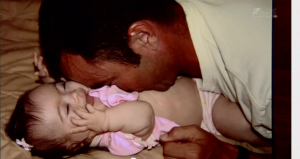Editor’s Note: Live Action News believes that parents need to receive full information about any disability or disease their preborn child is diagnosed with. Many diseases initially called “fatal,” “terminal,” or “incompatible with life” are actually quite different. Sadly, many doctors give worst case information to parents, and fail to inform parents of life-giving options such as in-utero surgeries, the benefit of waiting to see the real facts and the condition of the baby, support organizations, and hospice care. For true stories illustrating this, read about Grayson, Titus, Angela, Cayden, and Bella.
Recognizing that the majority of Americans are not comfortable with our abortion-on-demand jurisprudence, the mantra of abortion advocates is almost always tempered. The former catch-phrase “safe, legal, and rare” has recently morphed into “reducing the need for abortion.” (The Obama Administration made it clear that it was need not numbers of abortion that they are looking to reduce.) Yet, when we talk about making abortion “rare” and “reducing the need” for abortion, I always wonder where do the babies who are aborted because of a prenatal diagnosis fit in?
What I have come to realize is, for those that subscribe to this rhetoric, they don’t.

Heath White completely changed his mind about his daughter with Down syndrome and regrets pushing his wife to abort her.
A recent AP article announced that, “Some of mankind’s most devastating inherited diseases appear to be declining, and a few have nearly disappeared, because more people are using genetic testing to decide whether to have children.” However, it is not entirely accurate to state that the diseases are disappearing. Rather, in many cases, it is the children who are diagnosed with the disease that “disappear.” As the article notes, “more women are being tested as part of routine prenatal care, and many end pregnancies when diseases are found.”
How many is “many?”
Studies report staggering numbers. In California, Kaiser Permanente offers prenatal testing for couples who carry cystic fibrosis mutations. From 2006 to 2008, of the 87 pregnant women who underwent testing, 23 were found to be carrying a child with cystic fibrosis. Of the 17 children projected to have the severest type, only one was not aborted. Of the six diagnosed with less severe cases, four were aborted.
Justice works toward the elimination of disease, but not by “eliminating” those who are sick. When prenatal testing identifies a terminal condition, real reproductive justice provides resources and information about Hospice or palliative care for newborns and infants. These children and their families deserve true support — medical, spiritual, and psychological — as they face the end of a short life.
 We also know that children are aborted in droves upon the diagnosis of Down Syndrome, which is a disability, not a disease. In Ireland, up to 50% children diagnosed with Down Syndrome are aborted. That half of all children diagnosed with Down Syndrome are aborted is shocking, but it is a relatively low rate when compared to the neighboring United Kingdom where the number is around 90%. In the United States, the percentage of Down Syndrome babies carried to term is in the single digits.
We also know that children are aborted in droves upon the diagnosis of Down Syndrome, which is a disability, not a disease. In Ireland, up to 50% children diagnosed with Down Syndrome are aborted. That half of all children diagnosed with Down Syndrome are aborted is shocking, but it is a relatively low rate when compared to the neighboring United Kingdom where the number is around 90%. In the United States, the percentage of Down Syndrome babies carried to term is in the single digits.
Such high percentages of abortions after a prenatal diagnosis begs the question — are we really a society so bent on perfection that we do not want children with disabilities or illnesses, or is not enough being done to provide families with support and alternatives to abortion when tests prove positive? The answer is probably both.

The cover of Sports Illustrated Kids featuring Connor and Cayden Long. Cayden’s parents were told by doctors to abandon him because of his cerebral palsy.
Studies suggest that many undergoing prenatal testing are not thinking in terms of abortion. Yet, when a woman is given the news that the child she is carrying has a disability or illness, but before the reality of the diagnosis even settles in, she is often urged by her doctor to “terminate” the pregnancy quickly. One study found most abortions because of fetal abnormality occurred within 72 hours of the woman receiving the test results. Three days hardly allows time to become informed about resources available to parents of children with these disabilities. But as women weigh the news, they are faced with pressure from their physicians who want to avoid complications of a later term abortion.
Pressuring women to abort, and abort quickly, after a prenatal diagnosis is not reproductive justice. The long term effects on women of these abortions should not be ignored. Even Planned Parenthood, the nation’s largest abortion provider, notes on its website that studies show that “those who choose abortion because of genetic conditions may suffer more serious emotional effects and may have a greater need for counseling than those who elect abortion for socioeconomic or psychological reasons.”
There is no justice in ending a life because it is less-than-perfect, and there is no justice in setting women up to suffer serious emotional effects. Real reproductive justice will be only attained when we stop equating a prenatal diagnosis with a “need” for abortion ““ and when “rare” no longer means the disabled, the sick, and the terminally ill.
Other posts from AUL’s Reproductive Justice Series:
- Introduction to AUL’s Reproductive Justice Series
- Real Reproductive Justice Encourages Complete Information and Facilitates Life-Affirming Options
- Reproductive Justice for All Moms
- Prenatal Diagnosis and Reproductive Justice
- When Choice Becomes Discrimination
- Real Reproductive Justice Places Women’s Health Above Profit
- Real Reproductive Justice Relies on Medical Reality







